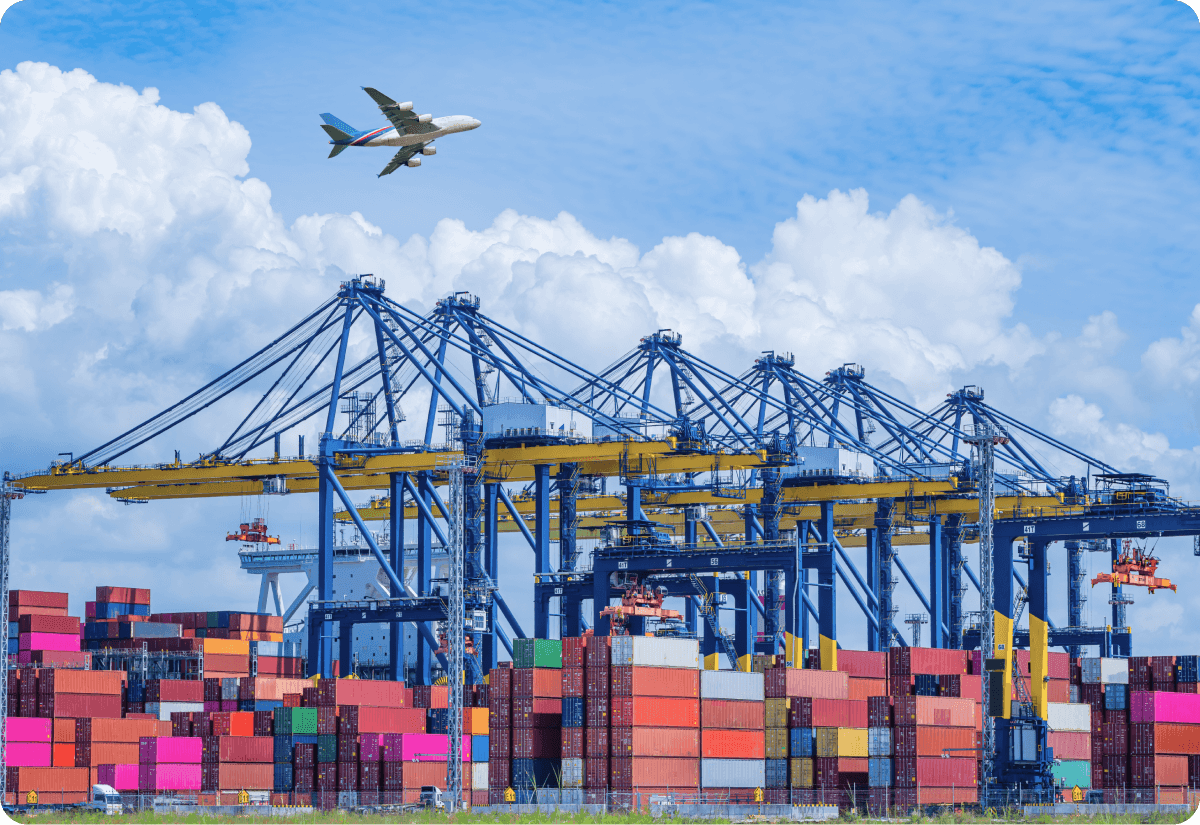When it comes to managing freight, one thing’s clear: every inch of space counts. Maximizing freight capacity isn’t just about loading efficiently; it’s about cutting shipping costs and boosting operational performance. Many companies, like Hardie’s Fresh Foods, have found that techniques like load optimization and combining shipments can significantly reduce total mileage and driver-related costs, leading to lower overall expenses.
Keep reading to discover practical ways to improve load efficiency, key cost-cutting strategies, and the benefits of a solid freight strategy.
Optimizing Freight Capacity for Maximum Load Efficiency
Optimizing load efficiency is essential to maintaining a competitive edge in logistics. Every inch of trailer space matters. When cargo is loaded strategically, companies can reduce empty miles and boost transit efficiency, helping them save with freight.
Using tools like TMS and automation, shippers can make sure trailers are loaded to maximize space, reducing the number of trips needed. This approach not only lowers transportation spend but also minimizes the risks of disruption and delay, especially in high-traffic lanes like air freight or port shipments. With proactive planning, shippers achieve better performance and lower invoices.
Data drives smarter decisions—let’s see how Business Intelligence tools turn insights into savings.
Harnessing Business Intelligence for Cost-Effective Shipping
Business Intelligence (BI) tools and dashboards help you spot patterns and tweak your freight strategy for maximum savings. By analyzing shipment data, you can cut empty miles, pick the best carriers, and plan loads more efficiently—helping you save with freight.
What Types of Analytics Can Help Improve Freight Operations and Cost Efficiency?
- Load Utilization Rates: Measure what percentage of trailer space you actually fill.
- Fuel Burn per Mile: Track fuel costs against miles driven to find inefficiencies.
- Carrier On-Time Performance: Compare carriers by delivery reliability.
- Cost per Pound/Kilometer: Calculate true cost to move each unit of weight or distance.
Using these metrics, you can make data-backed tweaks that lower your costs and boost performance.
Freight Factors to Consider for Cost-Effective Shipping
Shipping expenses are affected by various freight factors that impact efficiency and pricing. For many shippers, understanding these factors helps them save with freight and make better decisions to optimize shipments and streamline the supply chain. When key aspects are overlooked, the result is often inefficient freight movements and increased costs, affecting overall supply chain performance.
Here are some essential freight factors to consider for effective and cost-efficient shipping:
- Carrier Network: Building strong relationships with carriers ensures flexibility and reduces delays.
- Transportation Mode: Selecting the right mode (e.g., LTL, intermodal) minimizes expenses and improves efficiency.
- Route Optimization: Optimized routes reduce transit time and transportation spend.
- Load Planning Software: Helps improve load efficiency, reducing the number of trips.
- Labor and Equipment: Availability impacts the ability to move goods, especially during shortages.
- Supply and Demand: Monitoring freight demand and capacity constraints aids in better planning.
- Third-Party Logistics: Partnering with third-party providers can offer a competitive advantage by expanding options.
Cutting out intermediate stops can shave dollars off every shipment.
Understanding Zone Skipping and Its Cost Benefits
Zone skipping means sending a full truckload past several regional hubs straight to the final zone. This cuts handling fees and transit times because carriers avoid multiple unload/reload steps, helping you save with freight. Use it when you have enough volume to fill a trailer—savings come from fewer touchpoints and lower per-mile rates.
Lowering Freight Trucking Rates Through Smart Planning
Smart planning drives down freight trucking rates. When logistics professionals optimize each step, they lower expenses, streamline operations, and save with freight. Here’s how to save with freight in six key steps:
Step 1: Analyze Freight Routes
Review each route with transportation management software. Look for the shortest and least congested path to save with freight by minimizing both transit time and fuel consumption.
Step 2: Leverage LTL Shipments
Combine smaller shipments into LTL (Less-than-Truckload) loads to save freight—you pay only for the space you use, reducing overall shipping costs.
Step 3: Use Freight Modes Strategically
Choose between intermodal, transloading, or direct trucking based on your needs. Diversifying modes helps you save freight through more cost-effective transport options.
Step 4: Build Strong Carrier Relationships
Partner with reliable carriers to negotiate better rates and save with freight; trusted relationships also reduce risks and service disruptions.
Step 5: Plan for Seasonal Demands
Use historical data to lock in lower rates ahead of peak seasons. Early planning helps you save with freight by avoiding last-minute surcharges.
Final Step: Utilize Real-Time Visibility
Employ tracking tools to monitor shipments and make immediate adjustments. Real-time insights let you save with freight by preventing costly delays and reroutes.
A final check on your shipping bills can uncover hidden refunds and rate errors.
Unlocking Savings Through Freight Audits
Freight audits review your carrier invoices line by line, catching billing mistakes and missed discounts to help you save with freight. Common issues include incorrect weights, misapplied accessorial charges, and expired rate agreements.
Regular audits can recover 2–5% of your spend, ensuring you save with freight and only pay what you agreed to. Implement freight audits regularly to keep your budget on track and continually save with freight.
Freight Brokerage to Enhance Shipping Efficiency
Freight brokerage simplifies logistics by connecting shippers with the best carriers to meet specific needs. With expert management, it also introduces strategic ways to reduce expenses and improve load efficiency. Here’s how to maximize your logistics brokerage for smoother shipping:
1. Access a Broader Carrier Pool
A freight broker taps into an extensive network to find carriers quickly, even during high-demand seasons. For instance, if a primary carrier has a capacity shortage, a broker can secure alternative carriers to keep shipments on time.
Pro Tip: Regularly communicate upcoming needs with your broker. They can prepare options in advance, ensuring better availability when demand surges.
2. Adjust to Market Changes
Brokers constantly monitor the transport market, reacting quickly to rate fluctuations and selecting the most cost-effective transportation modes. For example, they might suggest switching to intermodal transit when trucking rates rise, keeping expenses manageable.
Pro Tip: Discuss market trends with your broker. A good broker will guide you on optimal shipping strategies as rates shift, helping you stay within budget.
3. Reduce Operational Overhead
Brokers handle logistics paperwork, from booking confirmations to compliance checks. For a company shipping both inbound and outbound goods, this reduces time spent on administrative tasks, freeing up resources for core operations.
Pro Tip: Streamline your communication with brokers by setting up automated document sharing. This minimizes delays in processing invoices and shipment requests, keeping operations efficient.
Brokers expand your options—but the final mile still matters for customer satisfaction.
The Crucial Role of Last-Mile Optimization in Reducing Shipping Costs
The last leg of delivery is often the most expensive. By clustering deliveries in dense zones, using micro-hubs, or offering precise delivery windows, you can cut driver miles and speed up drop-offs. Techniques like route density planning and local consolidation ensure you maximize each trip’s efficiency and keep costs down.
Request Your Custom Freight Solution with Real-Time Tracking
Like you, we know that managing shipping operations can get complex fast. Every shipment and delay affects customer satisfaction and adds costs. At Supply Chain Solutions, we get it. That’s why we offer custom solutions with real-time tracking, flexible routing, and dependable shipping management. We’ll work alongside you, providing support that scales as you grow, reducing disruptions, and keeping everything moving smoothly.
Let’s discuss how we can make your logistics simpler. Reach out to us today to design a freight solution that fits your needs perfectly.

